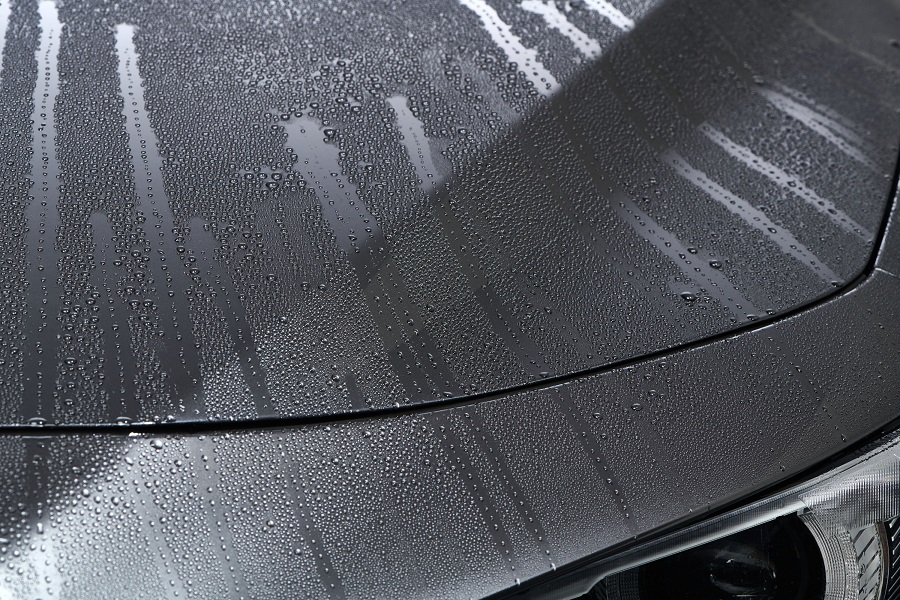Hydrophobic car detailing products offer extreme water beading and hardy surface protection. That’s got to be worth a look, right?
The term ‘hydrophobic’ has certainly become a buzz word in detailing circles over the past few years. We’ve all seen those epic social media shots of water beading up or sheeting off super-shiny paintwork, and there’s no shame in wanting some of that for your own pride and joy.
But what exactly are hydrophobic car detailing products? What does it mean and how do they work? Well, that’s where, as always, we’re here to help.
Hers’s our guide to everything you need to know about hydrophobic car detailing products.
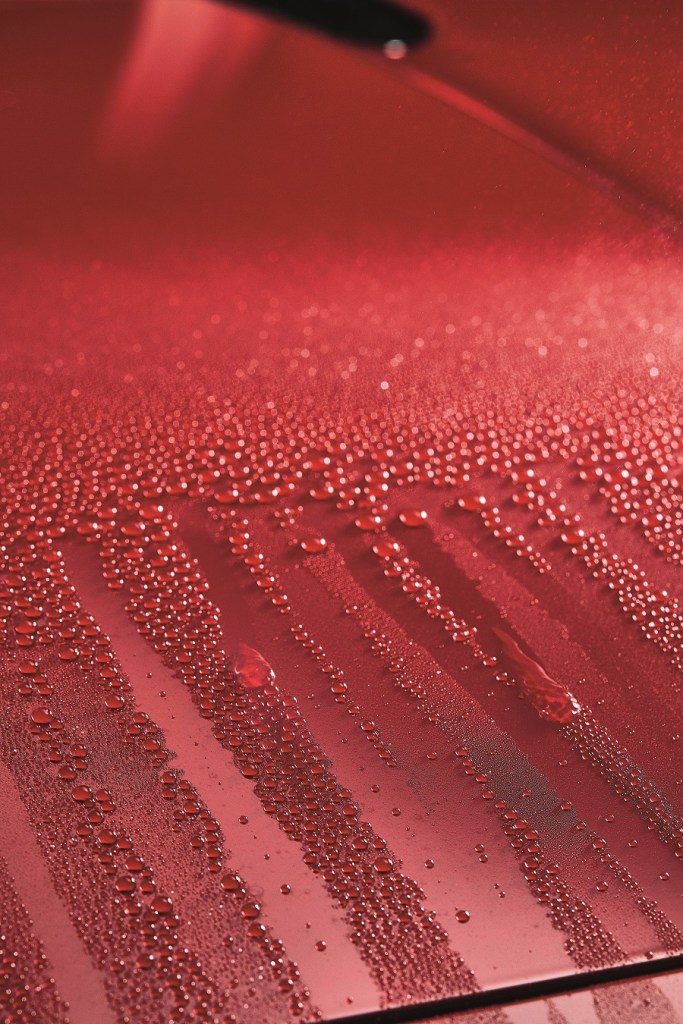
What does hydrophobic mean?
In the strictest sense of the word, hydrophobic means something that repels, or at least fails to mix with, water. In detailing terms, we use the word in much the same way to describe products that stop water (along with any grime) from sticking or bonding to vehicle surfaces, particularly exteriors.
Technically speaking. hydrophobic car detailing products don’t so much physically repel water, they form a microscopic barrier that’s impenetrable to the water molecules themselves. As the molecules can’t hold on to the surface, they either bead and sit on top due to surface tension, or simply roll off and onto the floor. The layer is primarily designed to protect the paint surface underneath.
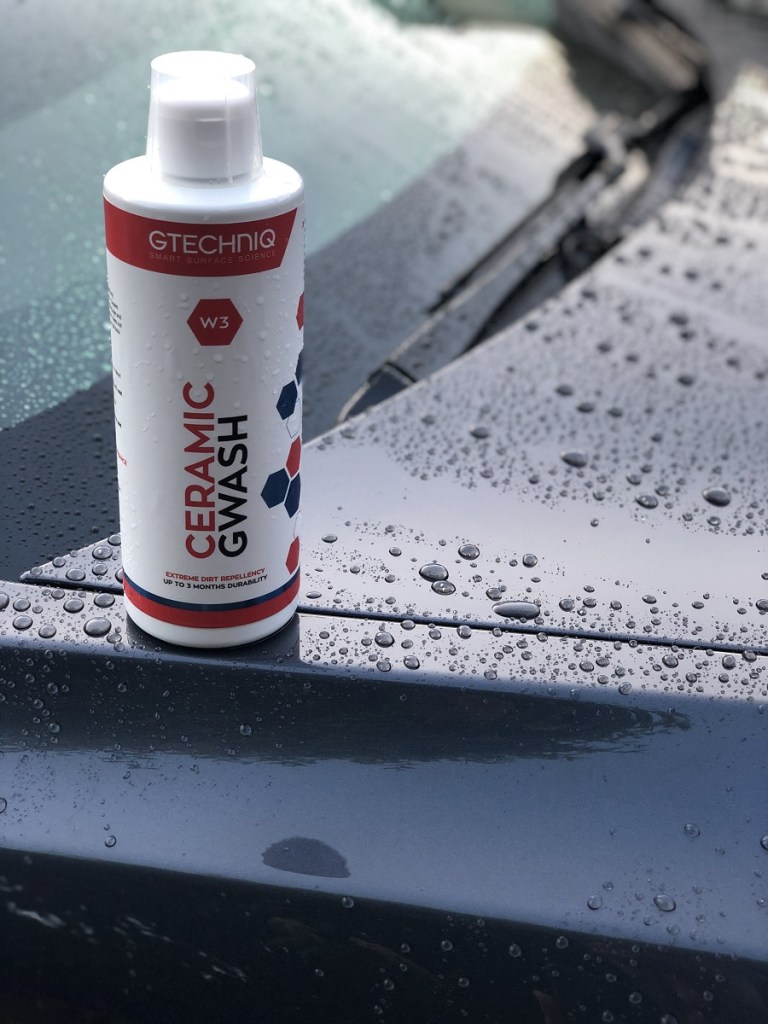
What car detailing products are hydrophobic?
Technically speaking all LSPs (last stage products) fall into the hydrophobic category. Car waxes, sealants and ceramic coatings are hydrophobic with varying degrees of performance and durability, regardless of the type of surface they’re designed to protect. That’s why you’ll always see cars beading water when after a fresh wax or coating.
What they also have in common is that they’re the products we use at the very last stage of a detail to offer protection to the surfaces, essentially locking in the cleaning and polishing we’ve already carried out. These products leave behind a layer of shielding to ensure that water and grime can’t make contact with, and inevitably damage, the surface underneath. Unlike a polish or a compound, LSPs are non-abrasive and not designed to physically clean or remove defects. Instead, they simply offer protection on a clean car, and tend to keep it cleaner for longer.
Hydrophobic Add-Ons
There are exceptions of course, there are hydrophobic glass cleaners and car shampoos, and even car polishes that contain wax or sealant. These kind of combination products are designed to leave behind a hydrophobic protection layer as a bonus after they’ve carried out their primary purpose. In most cases these offer the same type of protection, but without the extreme durability of stand-alone products.
There’s no doubt that hydrophobic protection products are most popular for paintwork, but glass and other hard surfaces can also benefit from the same treatment. There are plenty of products on the market that seal vehicle glass in a similar way as they would your paintwork, which allows the water to run off when you’re driving. With many ceramic glass coatings, you hardly ever have to use your wipers.

Are hydrophobic car detailing products designed to enhance the appearance of your car?
Discounting the bit about keeping your car cleaner for a longer period of time, which enhances the appearance in itself, last stage products will always make your car look better as a kind of side effect of how they work.
It’s not so crucial on glass because hydrophobic performance is always the priority. But with paintwork and other hard surfaces, these kinds of finishing products work on a microscopic level to create a much smoother top layer. This allows light to bounce back to the eye more uniformly, giving the appearance of a glossier surface.
If you look at paintwork under a microscope, you’ll see that it isn’t flat, the surface is extremely bumpy and full of peaks and troughs which tend to reflect light in all different directions. LSPs fill these ruts to give a top layer that’s as smooth as possible. You can think of it as like plastering a brick wall to give a smoother finish, only on a microscopic level.
This smooth layer not only stops water molecules penetrating and clinging on (which is where the hydrophobic part comes in) but it also stops the light bouncing around in different directions. A more uniform reflection of light tricks your eye into thinking the surface has more shine. All types of paint protection products offer optical surface enhancement in this manner.

What are the differences between waxes and coatings?
While the effect they give is similar, the difference comes with how these types of products bond to the surfaces, and this affects the period of durability they offer.
Waxes and paintwork sealants physically bond to surfaces; they cling on to all the microscopic surfaces to form their protection layer over the top. This is a strong bond which can last for months, but it does mean that they’re more susceptible to abrasion and chemical degradation than a ceramic coating. Even so, this hardy physical bonding means that waxes and sealants can still perform for several months before reapplication is needed.
Rather than physically clinging to surfaces, ceramic coatings chemically bond, essentially becoming a part of the surface itself. We call them ceramic because they’re based on silica, or more precisely silicon dioxide (SiO2) which is the main ingredient in glass, sand and quartz. In fact, in many cases these are marketed as glass, resin or quartz coating, but basically, they’re all based on the same chemical compound. What’s important here is that they bond to form a top layer that’s just like glass and, because it’s a chemical bonding process, it can last for an extended period, sometimes for years.
The increased performance in terms of durability and water behavior (because of the close-knit molecules in glass-like coating) is also the reason that most people associate the word ‘hydrophobic’ purely with SiO2 based products, rather than waxes and sealants.
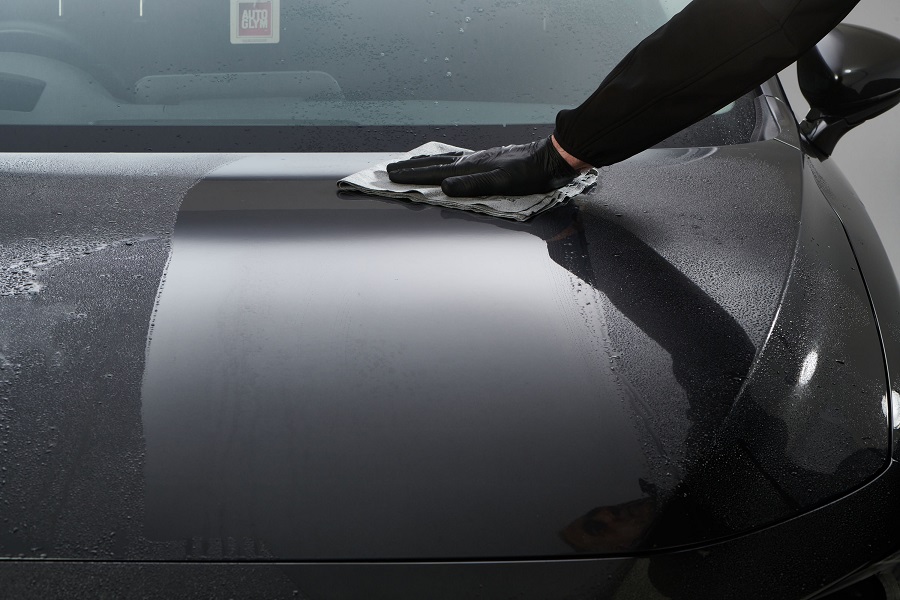
Does that mean that ceramic coatings are better than waxes?
In terms of durability, SiO2-based products will last longer than the equivalent wax or sealant, and often give more extreme hydrophobic performance. But, as always in the world of detailing, that isn’t the whole story.
Ceramic coatings and sealants are man-made products that give a perfectly clear glossy surface, but for many detailers the finish can be a little stark and sterile. Natural waxes on the other hand contain a trace amount of impurities which absorb or slightly bend the light passing though. This gives the surface a warm glow and the appearance of depth. For many the ‘look’ of a wax trumps the durability of a coating every time. It’s also unlikely that they’ll be leaving their car for months and months between details anyway.
In simple terms you could say that ceramic based products and sealants are ideal for daily drivers when durability is the priority, but when the emphasis is on the look, a wax could be your go-to for the most pampered paintwork. Although that’s by no means a definitive answer and the ease of application is another huge consideration.
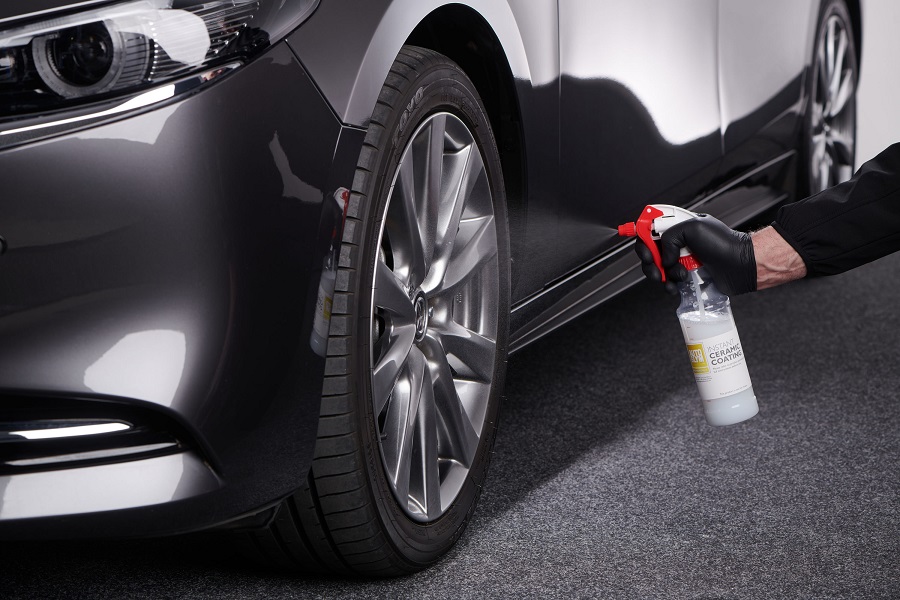
How are hydrophobic car detailing products applied?
The short of it is that it depends on the product, and there’s lots of different ones out there. If we were to generalize a little, we could say that as the durability of a product increases, the more difficult the product tends to be to apply. Spray waxes and spray-on sealants for example are designed for quick, easy application. You just blast them on and wipe them over with a microfiber cloth. These can last for multiple weeks.
Liquid waxes/sealants and creams may take a little more effort to apply – generally, you’ll use an applicator before buffing away any excess. But, because they have more solids in their formula, they will stay on the surface for longer. Hard waxes can be the most difficult to apply and a bit harder to buff to a perfect finish, but these can last for many months. For more detail, check out our guide on how to wax a car.
Professional Coatings vs. Home Detailing
With man-made ceramic coatings, it’s a similar story. Originally these were designed for professional application only. At the extreme end, the advantage of a hardcore pro ceramic coating is that it can last for multiple years. The reason that these products perform for so long is that the chemical bonding makes them difficult to remove, but it’s also worth noting that this that makes them much riskier to apply. Pro training is needed here because if you mess it up, you can’t just use an all-purpose cleaner to strip them away, like you can with a wax. In fact, any runs and blemishes may even need sanding to get the coating off. They’re not one for the faint hearted.
For this reason, many easy-to-use silica-based products have been developed in the last few years, aimed squarely at the home detailing market. These range from super-quick, spray-on products that introduce a SiO2 coating and will last a few months. Ceramic foams applied with a snow foam lance that will last for 6-months or so. And semi-professional coatings that use ceramic wipes for application and will last for up to a year. In some cases, these kind of products can make applying ultra-hydrophobic, durable ceramic protection even easier than a wax. They also come without any of the associated risks that come with applying a professional ceramic coating.

